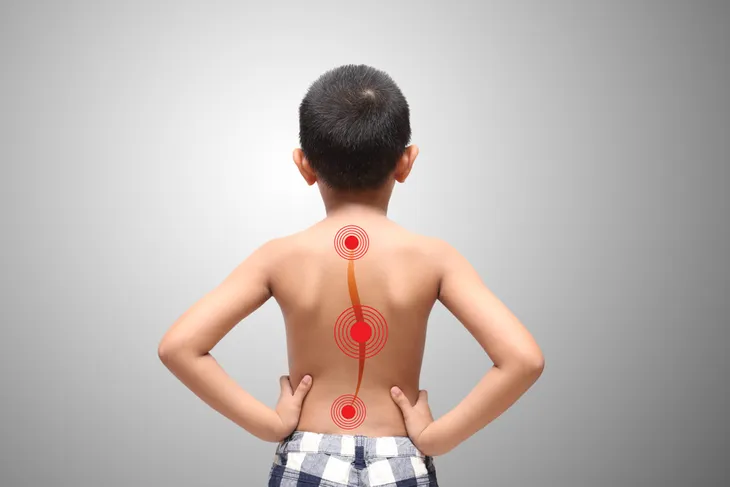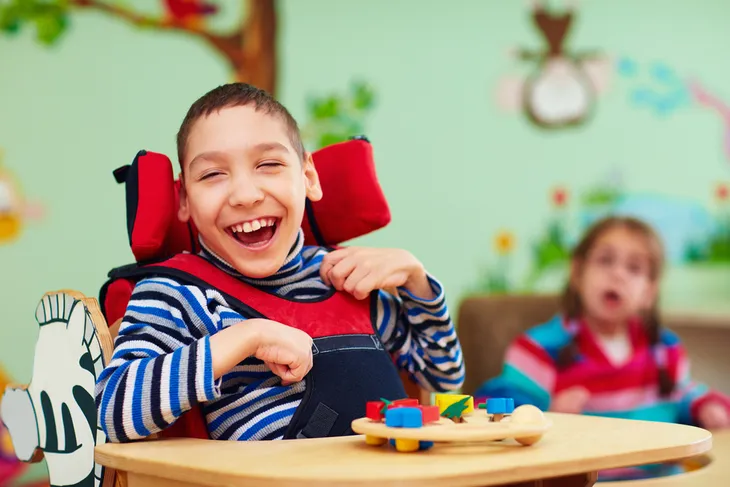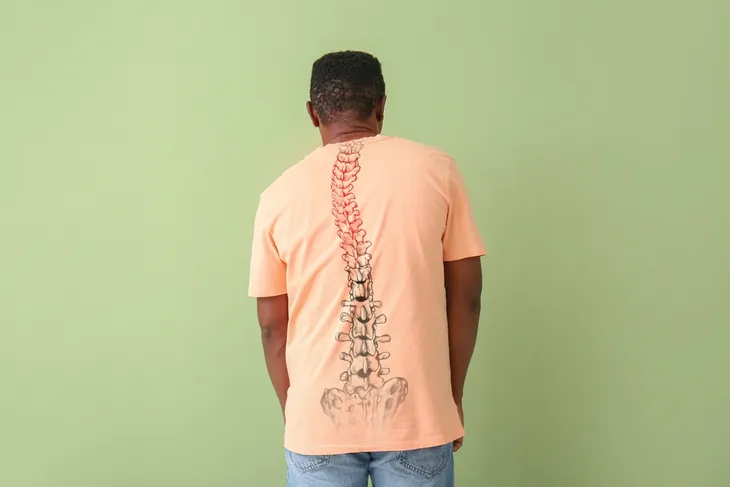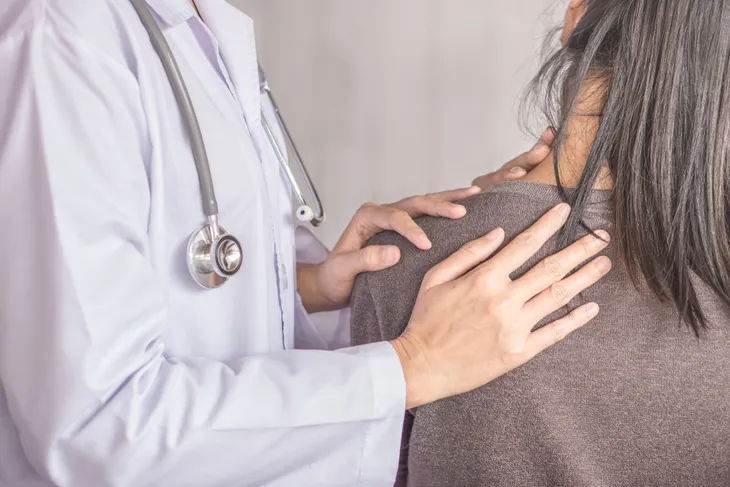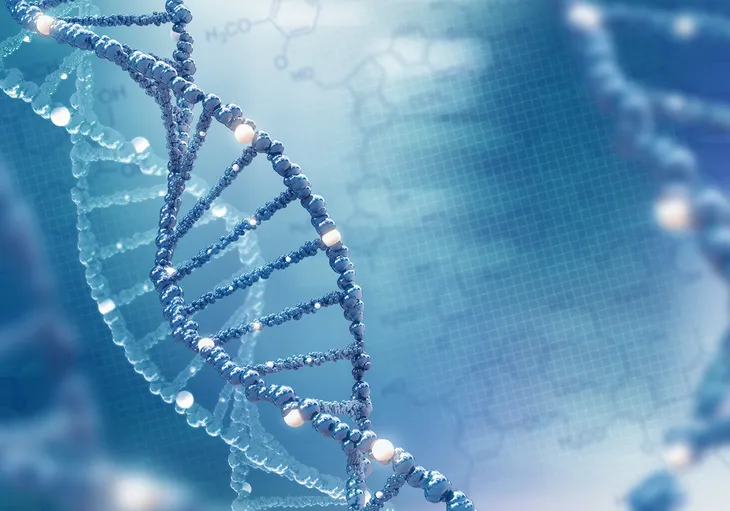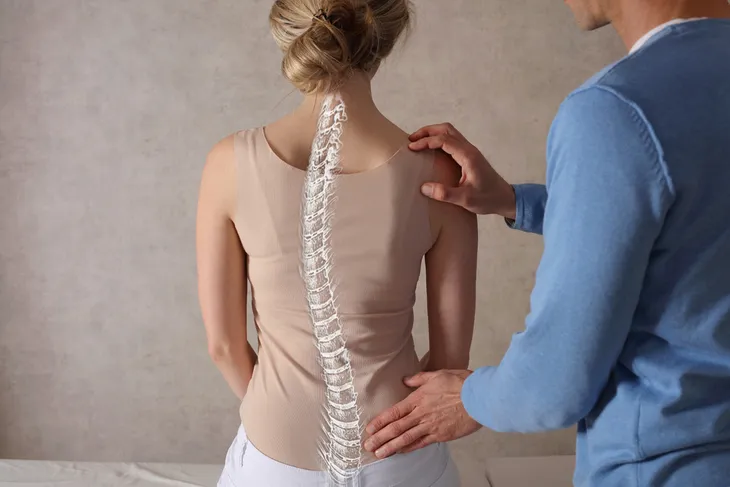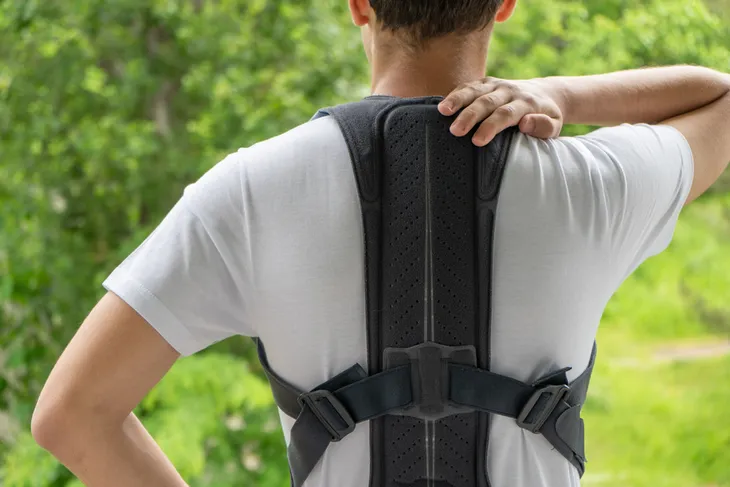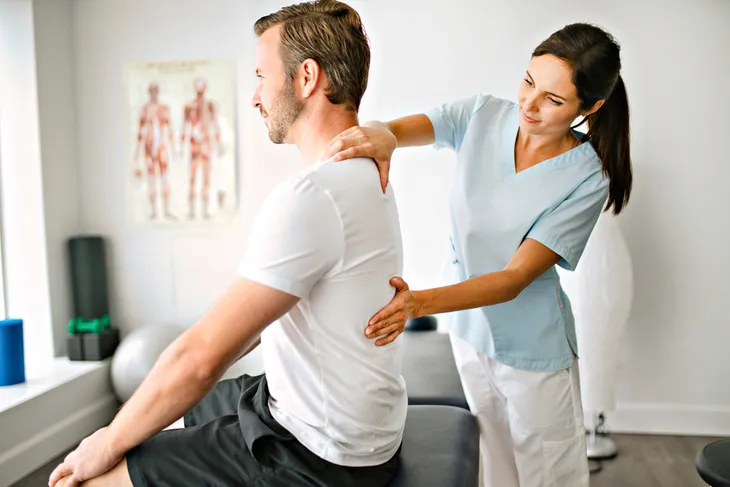- Scoliosis is an abnormal curvature of the spine, typically in an “S” or “C” shape.
- Around 6 to 9 million people are living with scoliosis in the United States which is why it’s important to get informed.
- Mild scoliosis may not require treatment, however, severe cases may require a brace or even surgery.
Does your body lean to one side? Or perhaps you have uneven shoulders or hips. If this is the case, you might have scoliosis, a condition that affects the curvature of your spine.
Scoliosis isn’t always noticeable as some cases can be very mild, however, it can also be severe in others. For some people, it can even be disabling. There’s a lot more to know about this condition too. Follow along as we explore everything you need to know about scoliosis including the different types, the common symptoms to look out for, what causes it, and how to treat it.
What Is Scoliosis?
Scoliosis is an abnormal curvature of the spine. Normally, a spine curves at the top of the shoulder and in the lower back, however, someone with scoliosis will have a spine that is “curved from side to side or in an “S” or “C” shape,” explains Healthline.
Around 6 to 9 million people are living with scoliosis in the United States. While scoliosis can be present at birth, it is most commonly detected in childhood or early adolescence during growth spurts. There are three different types of scoliosis too, so let’s take a look at what they are next.
Congenital Scoliosis
Congenital scoliosis means a “spinal curvature develops because of misshapen vertebrae,” explains Johns Hopkins Medicine. This type of scoliosis can be detected early in infants but only if there are visible signs.
The source says it’s usually diagnosed later in childhood. During growth spurts, a child may develop asymmetries which makes the condition more noticeable. Often doctors use a “watch and wait” approach when treating congenital scoliosis, adds the source.
Idiopathic Scoliosis
Another type is idiopathic scoliosis. The Boston Children’s Hospital says “idiopathic” means there is no definite cause. Idiopathic scoliosis is also the most common type.
While the exact cause isn’t known, the source says it usually runs in families. Females are also eight times more likely to develop it than boys. Johns Hopkins Medicine also notes that it often develops at the onset of adolescence, around 10-years of age, and can get worse as the child grows.
Neuromuscular Scoliosis
The third type of scoliosis is known as neuromuscular scoliosis. It also happens to be the second most common type, says the Children’s Hospital of Philadelphia.
Like the other types, neuromuscular scoliosis also causes a curvature of the spine and it’s caused by neurological problems, poor muscle control, as well as other issues. It’s often associated with other health conditions like spina bifida, cerebral palsy, muscular dystrophy, spinal cord injuries, and musculoskeletal tumors, says the source.
Common Signs and Symptoms of Scoliosis
Sometimes scoliosis is visible to the naked eye and you can see that the spine is curved. There are other symptoms to be on the lookout for too. Uneven shoulders or a tilted eyeline may be a sign of scoliosis.
The Mayo Clinic also says an uneven waist or one hip that is higher than the other can also be a sign. You should also be on the lookout for one shoulder blade that protrudes more than the other or one rib cage that juts forwards. This happens because “the spine will rotate or twist in addition to curving side to side,” causing the ribs and muscles on one side of the body to stick out further than the other, explains the source.
What Causes Scoliosis?
Pinpointing the exact cause of scoliosis can be difficult. In fact, the American Association of Neurological Surgeons (AANS) says 80-percent of cases are diagnosed as idiopathic scoliosis which means there is no known cause.
That said, when the cause can be identified it’s often a result of a birth defect, spinal cord abnormalities, neuromuscular conditions (such as cerebral palsy or muscular dystrophy), injury or infection of the spine, or a genetic condition. Healthline also notes that scoliosis is often diagnosed within the first 7-years of a child’s life.
Risk Factors
Certain factors may increase a person’s risk of developing scoliosis. For starters, the Mayo Clinic says age could be a risk factor as the signs usually begin in adolescence.
Gender may also play a role. While both boys and girls have an equal risk of developing mild scoliosis, the source says girls have a greater risk “of the curve worsening and requiring treatment.” Finally, having a family history (meaning having an immediate family member with the condition) may also increase your risk. However, the source points out that many children develop it without having a family history too.
Possible Complications
Most cases of scoliosis are mild, however, in some cases, it can be severe which can create complications. The National Library of Medicine says some of these may include persistent pain, spine or nerve damage, leakage of spinal fluid, and spinal infection after surgery.
In severe cases, breathing problems are also possible because the rib cage may press against the lungs. Scoliosis may also lead to back problems or noticeable changes in one’s appearance, such as a shift in the waist, uneven hips or shoulder, or prominent ribs. Some individuals also experience low self-esteem because of their appearance.
How Is Scoliosis Diagnosed?
If you or your child is showing signs of scoliosis, contact your doctor. Early detection is vital for successful treatment, says Johns Hopkins Medicine.
To diagnose scoliosis, your doctor will likely start by reviewing your medical history as well as a physical exam. X-rays are also common as this allows your doctor to see a clear picture of the spine. The X-ray also helps your doctor measure the degree of the spinal curvature.
The source also notes additional diagnostic tests may be necessary for “non-idiopathic curvatures, atypical curve patterns or congenital scoliosis.” These may include a computed tomography (CT) scan and a magnetic resonance imaging (MRI) scan.
Treating Scoliosis
Mild cases of scoliosis often don’t need treatment. Medical News Today says if the curve of the spine is 10- to 25-degrees, your doctor will likely want to have regular check-ups at 3, 6, or 12-month intervals to determine if the condition is progressing.
However if the curve of the spine is 25- to 40-degrees, you may need treatment, such as bracing. A curvature greater than that may require surgery. When it comes to deciding your treatment, your doctor will also consider a variety of factors such as your gender (as it’s more likely for it to get worse in females), the severity of the curve, the curve position, and the bone maturity.
Treatment: Casting and Bracing
In some cases, your doctor may recommend casting or bracing to help treat scoliosis. Medical News Today says casting is typically used to treat infantile scoliosis. A plaster casting is used to help “the infant’s spine grow into a typical position,” explains the source. The cast needs to be worn at all times and since infants grow quickly, your doctor will need to change the cast regularly.
The other treatment option, bracing, is used for moderate scoliosis when the bones are still growing. The source says the brace helps prevent further curvature, however, it doesn’t cure or reverse scoliosis. The brace is meant to be worn all the time, even at night, however, it’s no longer needed once the bones stop growing.
Treatment: Surgery
In severe cases of scoliosis, surgery may be necessary. Healthline says surgery is typically reserved for individuals with a curvature of 40-degrees or more.
The source says the standard procedure is a spinal fusion which “fuses your vertebrae together using a bone graft, rods, and screws.” The rods provide support to keep your spine in a straight position while the screws hold the rods in place. The source also says the rods can be adjusted in children as they grow.
 novak.elcic / Shutterstock
novak.elcic / ShutterstockHow to Relieve Pain and Discomfort
Scoliosis can cause pain and discomfort for some people. While it’s important to follow the treatment plan recommended by your doctor, there are things you can do in the meantime to try and get some relief. Medical News Today says some people get relief from visiting a chiropractor. Just be sure to get approval from your doctor first and choose a chiropractor that specializes in scoliosis.
Healthline also says exercise and gentle stretching may help ease discomfort and painful symptoms. Talk to your doctor about what exercises you can try at home. Finally, medication may be necessary to ease the pain but again, it’s always important to discuss this with your doctor first.


